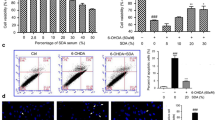Abstract
Objective
To explore the effect of Bushen Huoxue Decoction (补肾活血饮, BHD) on the orphan receptor (Nurr1) and tyrosine hydroxylase (TH) in the brain of rats with Parkinson’s disease (PD).
Methods
One hundred and twenty SD rats were divided into 100 in the model group and 20 in the normal control group, fififtyeight SD rats from the model group, established into PD model successfully by injuring their substantia nigra (SSN) with 6-hydroxydopamine, were divided equally into the model group and the test group, and they were treated with saline and BHD, respectively, for eight successive weeks. The change in the rats’ behavior before and after treatment was observed by counting the cycles of rotation induced by apomorphine injection; the pathology of neurons, level of Nurr1 mRNA expression, and amount of TH positive cells in SSN were observed after treatment.
Results
The rats’ behavior was improved in the tested group signifificantly, the rotation cycle after treatment being 84.0±20.0 cycles/40 min, which was signifificantly lower than that in the model group (377.0 ±62.3 cycles/40 min, P<0.01). Besides, the Nurr1 mRNA expression and TH positive cell in the test group were 0.97±0.15 and 49.40±14.72, respectively, which were signifificantly higher than those in the model group, 0.22±0.03 and 5.45±2.58, respectively (all P<0.01).
Conclusion
BHD could treat PD by enhancing the Nurr1 mRNA expression, increasing the TH content in brain, and promoting the repairing of injured neuron in cerebral SSN.
Similar content being viewed by others
References
Dou YQ, Yang MH, Liu Y, Wei ZM. Curative effect of integrated traditional Chinese medicine and Western medicine for treatment of patients with Parkinson disease: A control study. Chin J Clin Rehabil (Chin) 2006;10:6–8.
Liu Y, Yang MH, Dou YQ, Wang HM. Reproduction and evaluation of 6-OHDA-induced rat model of Parkinson’s disease. Med J Chin People’s Liberation Army (Chin) 2007;32:1160–1162.
Zhuge QC, translate. The rat brain in stereotaxic coordinates. 3rd ed. Beijing: People’s Medical Publishing House; 2005:30–59.
Xu R, Li G, Yao YQ. Apomorphine caused morphological changes in ventral tagmental area and abnormal rotations in rats with Parkinson disease induced by 6-hydroxydopamine. Acta Univ Med Anhui (Chin) 2006;41:247–249.
Henze C, Earl C, Sautter J, Schmidt N, Themann C, Hartmann A, et al. Reactive oxidative and nitrogen species in the nigrostriatal system following striatal 6-hydroxydopamine lesion in rats. Brain Res 2005;1052:97–104.
Ahn TB, Kim JM, Kwon KM, Lee SH, Jeon BS. Survival and migration of transplanted neural stem cell-derived dopamine cells in the brain of parkinsonian rat. Int J Neurosci 2004;14:575–585.
Chu Y, Kompoliti K, Cochran EJ, Mufson EJ, Kordower JH. Age-related decreases in Nurrl immunoreactivity in the human substantia nigra. J Comparative Neurol 2002;450:203–214.
Saijo K, Winner B, Carson CT, Collier JG, Leah B, Rosenfeld MG, et al. A Nurr1/CoREST pathway in microglia and astrocytes protects dopaminergic neurons from inflammation-induced death. Cell 2009;137:47–59.
Jankovic J, Chen S, Le WD. The role of Nurr1 in the development of dopaminergic neurons and Parkinson’s disease. Prog Neurobiol 2005;77:128–138.
Author information
Authors and Affiliations
Corresponding author
Additional information
Supported by National Natural Science Foundation of China (No. 30672762)
Rights and permissions
About this article
Cite this article
Yang, Mh., Wang, Hm. & Liu, Y. Effect of Bushen Huoxue Decoction (补肾活血饮) on the orphan receptor and tyrosine hydroxylase in the brain of rats with Parkinson’s disease. Chin. J. Integr. Med. 17, 43–47 (2011). https://doi.org/10.1007/s11655-011-0618-1
Received:
Published:
Issue Date:
DOI: https://doi.org/10.1007/s11655-011-0618-1



